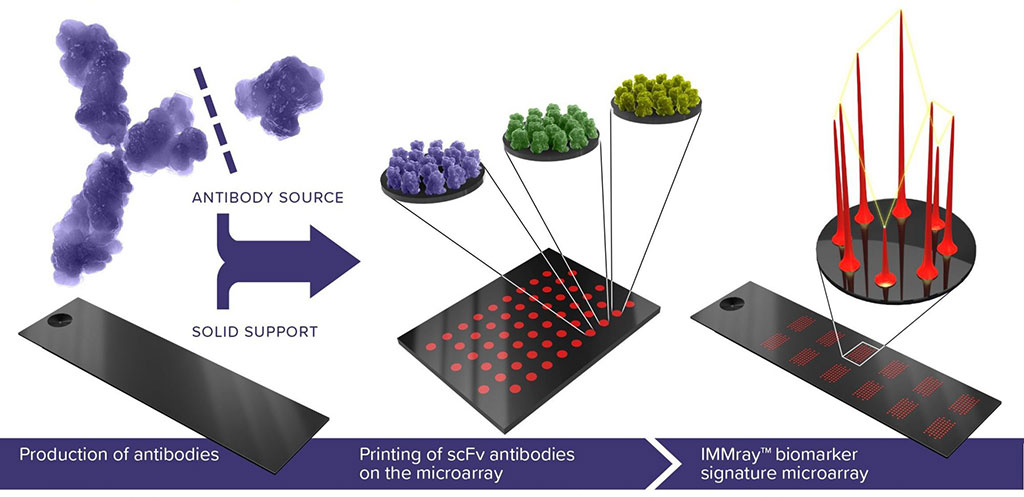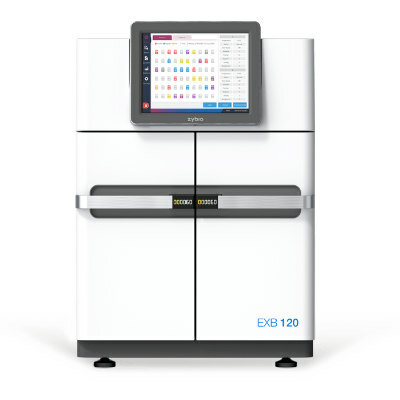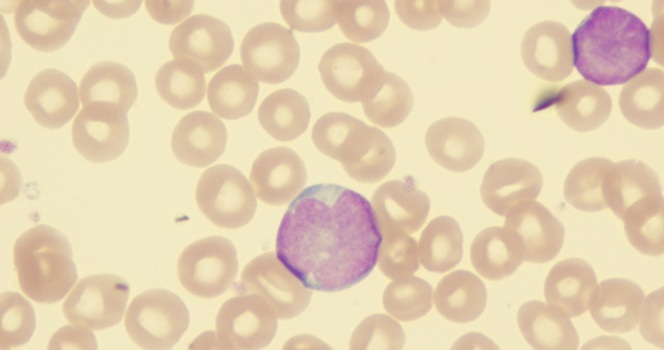Immunoassay Detects Pancreatic Cancer in People at High Risk
|
By LabMedica International staff writers Posted on 28 Feb 2022 |

An immunoassay was able to detect pancreatic cancer in high-risk individuals and with high sensitivity and specificity.
Pancreatic cancer arises when cells in the pancreas, a glandular organ behind the stomach, begin to multiply out of control and form a mass. These cancerous cells have the ability to invade other parts of the body. A number of types of pancreatic cancer are known.
Signs and symptoms of the most-common form of pancreatic cancer may include yellow skin, abdominal or back pain, unexplained weight loss, light-colored stools, dark urine, and loss of appetite. Usually, no symptoms are seen in the disease's early stages, and symptoms that are specific enough to suggest pancreatic cancer typically do not develop until the disease has reached an advanced stage.
An international team of gastroenterologists led those at University of Pittsburgh Medical Center (Pittsburgh, PA, USA) examined serum samples from 586 adults: 167 with pancreatic ductal adenocarcinoma (PDAC) (median age 70 years, 58% male), 203 at high-risk for familial PDAC from a clinical trial (median 59 years, 36% male), and a control group of 216 healthy adults (median 49 years, 51% male). Histologically confirmed PDAC blood samples were collected for processing prior to surgery or adjuvant treatment, and laboratory personnel were blinded to the identity of the serum samples. Samples were collected at eleven sites in the USA and Europe, using standard protocols with storage conditions of -80 °C and thawed for analysis within two years of collection.
The scientists used the multiplex IMMray PanCan-d assay (Immunovia, Marlborough, MA, USA) which distinguished 56 PDAC stages I & II versus high-risk individuals with 98% specificity and 85% sensitivity, and distinguished PDAC stages I – IV versus high-risk individuals with 98% specificity and 87% sensitivity. They identified samples with a CA19-9 value of 2.5 U/mL or less as probable Lewis null (le/le) individuals. Excluding these 55 samples from the analysis increased the IMMray PanCan-d test sensitivity to 92% for 157 patients with PDAC stages I-IV versus 379 controls while maintaining specificity at 99%; test sensitivity for PDAC stages I & II increased from 85% to 89%. IMMray PanCan-d combines eight serum biomarkers with CA19-9 to generate a risk-level signature. The biomarkers are a combination of immunoregulatory and tumor biomarkers.
Andrew Hendifar, MD, an Assistant Professor at Cedars-Sinai Medical Center in Los Angeles, who was not involved in the study, said, “The high specificity is promising and proof of principle that biomarker assays could be used to help clinical decision-making in identifying early pancreatic cancer.”
The authors concluded that their results demonstrate the IMMray PanCan-d blood test can detect PDAC with high specificity (99%) and sensitivity (92%). The key to improve survival is early detection during a potentially curable stage. Low or negative CA19-9 expression in individuals who are genotypically Lewis antigen null (i.e., le/le with mutations in both copies of the FUT3 gene) further limits the reliability of this biomarker for PDAC detection.” The study was published on February 14, 2022 in the journal Clinical and Translational Gastroenterology.
Related Links:
University of Pittsburgh Medical Center
Immunovia
Latest Pathology News
- Tunable Cell-Sorting Device Holds Potential for Multiple Biomedical Applications
- AI Tool Outperforms Doctors in Spotting Blood Cell Abnormalities
- AI Tool Rapidly Analyzes Complex Cancer Images for Personalized Treatment
- Diagnostic Technology Performs Rapid Biofluid Analysis Using Single Droplet
- Novel Technology Tracks Hidden Cancer Cells Faster
- AI Tool Improves Breast Cancer Detection
- AI Tool Predicts Treatment Success in Rectal Cancer Patients
- Blood Test and Sputum Analysis Predict Acute COPD Exacerbation
- AI Tool to Transform Skin Cancer Detection with Near-Perfect Accuracy
- Unique Immune Signatures Distinguish Rare Autoimmune Condition from Multiple Sclerosis
- Simple Optical Microscopy Method Reveals Hidden Structures in Remarkable Detail
- Hydrogel-Based Technology Isolates Extracellular Vesicles for Early Disease Diagnosis
- AI Tool Improves Accuracy of Skin Cancer Detection
- Highly Sensitive Imaging Technique Detects Myelin Damage
- 3D Genome Mapping Tool to Improve Diagnosis and Treatment of Genetic Diseases
- New Molecular Analysis Tool to Improve Disease Diagnosis
Channels
Clinical Chemistry
view channel
Chemical Imaging Probe Could Track and Treat Prostate Cancer
Prostate cancer remains a leading cause of illness and death among men, with many patients eventually developing resistance to standard hormone-blocking therapies. These drugs often lose effectiveness... Read more
Mismatch Between Two Common Kidney Function Tests Indicates Serious Health Problems
Creatinine has long been the standard for measuring kidney filtration, while cystatin C — a protein produced by all human cells — has been recommended as a complementary marker because it is influenced... Read moreMolecular Diagnostics
view channel
Simple Urine Test to Revolutionize Bladder Cancer Diagnosis and Treatment
Bladder cancer is one of the most common and deadly urological cancers and is marked by a high rate of recurrence. Diagnosis and follow-up still rely heavily on invasive cystoscopy or urine cytology, which... Read more
Blood Test to Enable Earlier and Simpler Detection of Liver Fibrosis
Persistent liver damage caused by alcohol misuse or viral infections can trigger liver fibrosis, a condition in which healthy tissue is gradually replaced by collagen fibers. Even after successful treatment... Read moreHematology
view channel
Platelet Activity Blood Test in Middle Age Could Identify Early Alzheimer’s Risk
Early detection of Alzheimer’s disease remains one of the biggest unmet needs in neurology, particularly because the biological changes underlying the disorder begin decades before memory symptoms appear.... Read more
Microvesicles Measurement Could Detect Vascular Injury in Sickle Cell Disease Patients
Assessing disease severity in sickle cell disease (SCD) remains challenging, especially when trying to predict hemolysis, vascular injury, and risk of complications such as vaso-occlusive crises.... Read more
ADLM’s New Coagulation Testing Guidance to Improve Care for Patients on Blood Thinners
Direct oral anticoagulants (DOACs) are one of the most common types of blood thinners. Patients take them to prevent a host of complications that could arise from blood clotting, including stroke, deep... Read moreMicrobiology
view channel
Rapid Diagnostic Test Matches Gold Standard for Sepsis Detection
Sepsis kills 11 million people worldwide every year and generates massive healthcare costs. In the USA and Europe alone, sepsis accounts for USD 100 billion in annual hospitalization expenses.... Read moreRapid POC Tuberculosis Test Provides Results Within 15 Minutes
Tuberculosis remains one of the world’s deadliest infectious diseases, and reducing new cases depends on identifying individuals with latent infection before it progresses. Current diagnostic tools often... Read more
Rapid Assay Identifies Bloodstream Infection Pathogens Directly from Patient Samples
Bloodstream infections in sepsis progress quickly and demand rapid, precise diagnosis. Current blood-culture methods often take one to five days to identify the pathogen, leaving clinicians to treat blindly... Read morePathology
view channel
Tunable Cell-Sorting Device Holds Potential for Multiple Biomedical Applications
Isolating rare cancer cells from blood is essential for diagnosing metastasis and guiding treatment decisions, but remains technically challenging. Many existing techniques struggle to balance accuracy,... Read moreAI Tool Outperforms Doctors in Spotting Blood Cell Abnormalities
Diagnosing blood disorders depends on recognizing subtle abnormalities in cell size, shape, and structure, yet this process is slow, subjective, and requires years of expert training. Even specialists... Read moreTechnology
view channel
Artificial Intelligence Model Could Accelerate Rare Disease Diagnosis
Identifying which genetic variants actually cause disease remains one of the biggest challenges in genomic medicine. Each person carries tens of thousands of DNA changes, yet only a few meaningfully alter... Read more
AI Saliva Sensor Enables Early Detection of Head and Neck Cancer
Early detection of head and neck cancer remains difficult because the disease produces few or no symptoms in its earliest stages, and lesions often lie deep within the head or neck, where biopsy or endoscopy... Read moreIndustry
view channel
Abbott Acquires Cancer-Screening Company Exact Sciences
Abbott (Abbott Park, IL, USA) has entered into a definitive agreement to acquire Exact Sciences (Madison, WI, USA), enabling it to enter and lead in fast-growing cancer diagnostics segments.... Read more






















